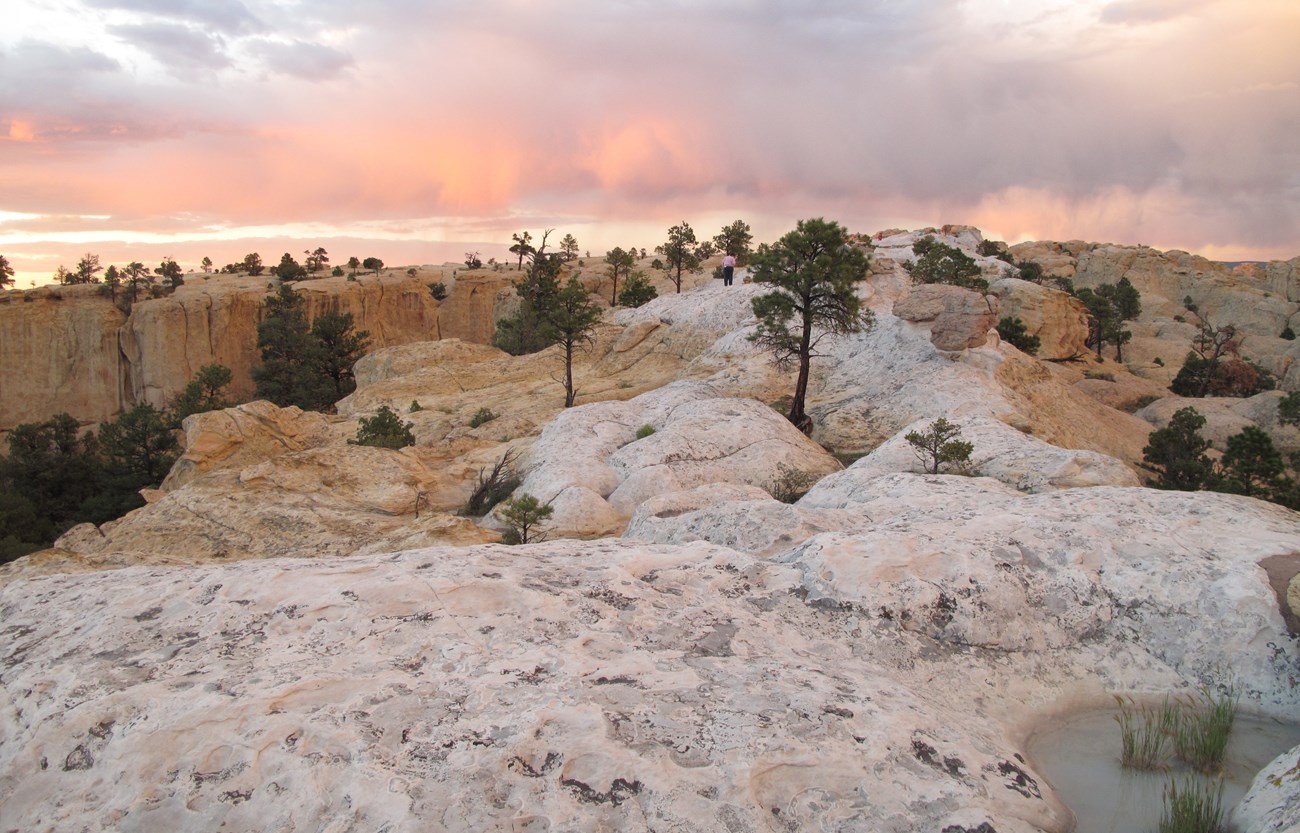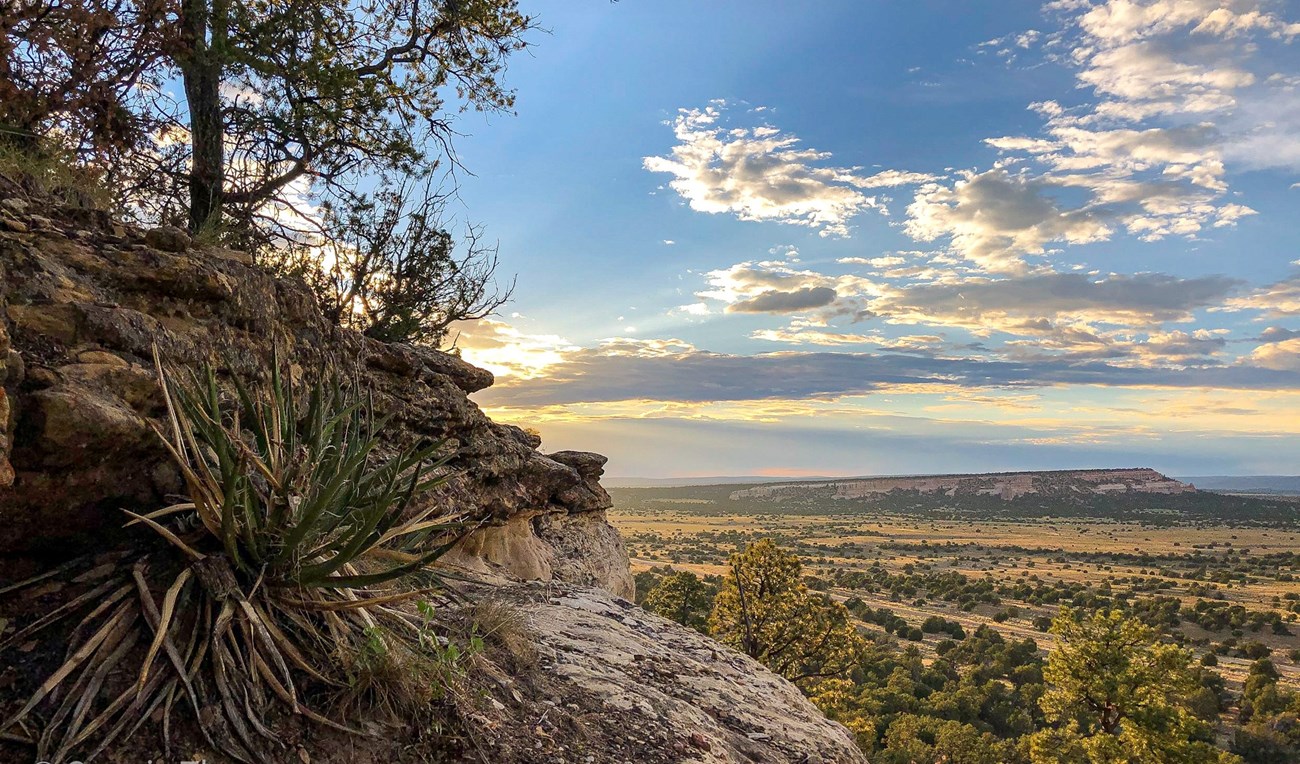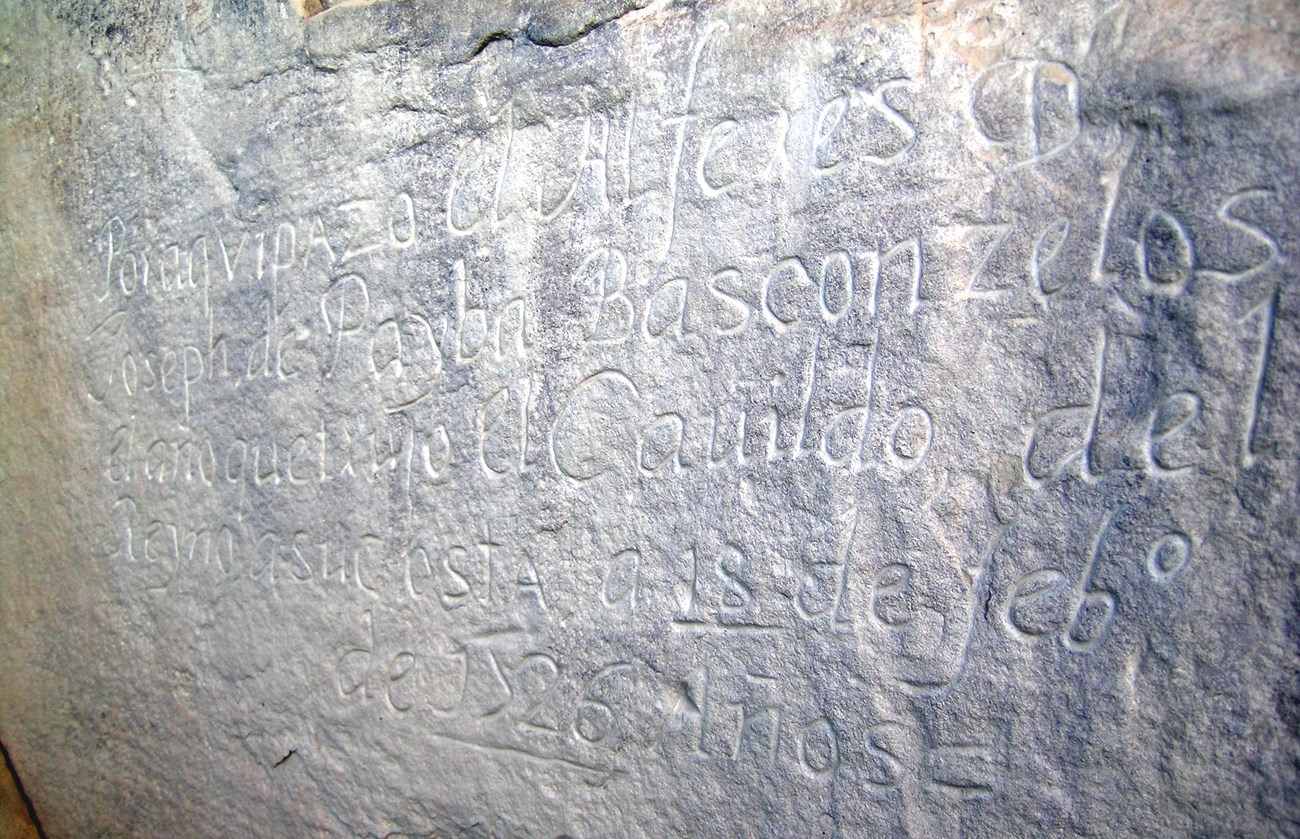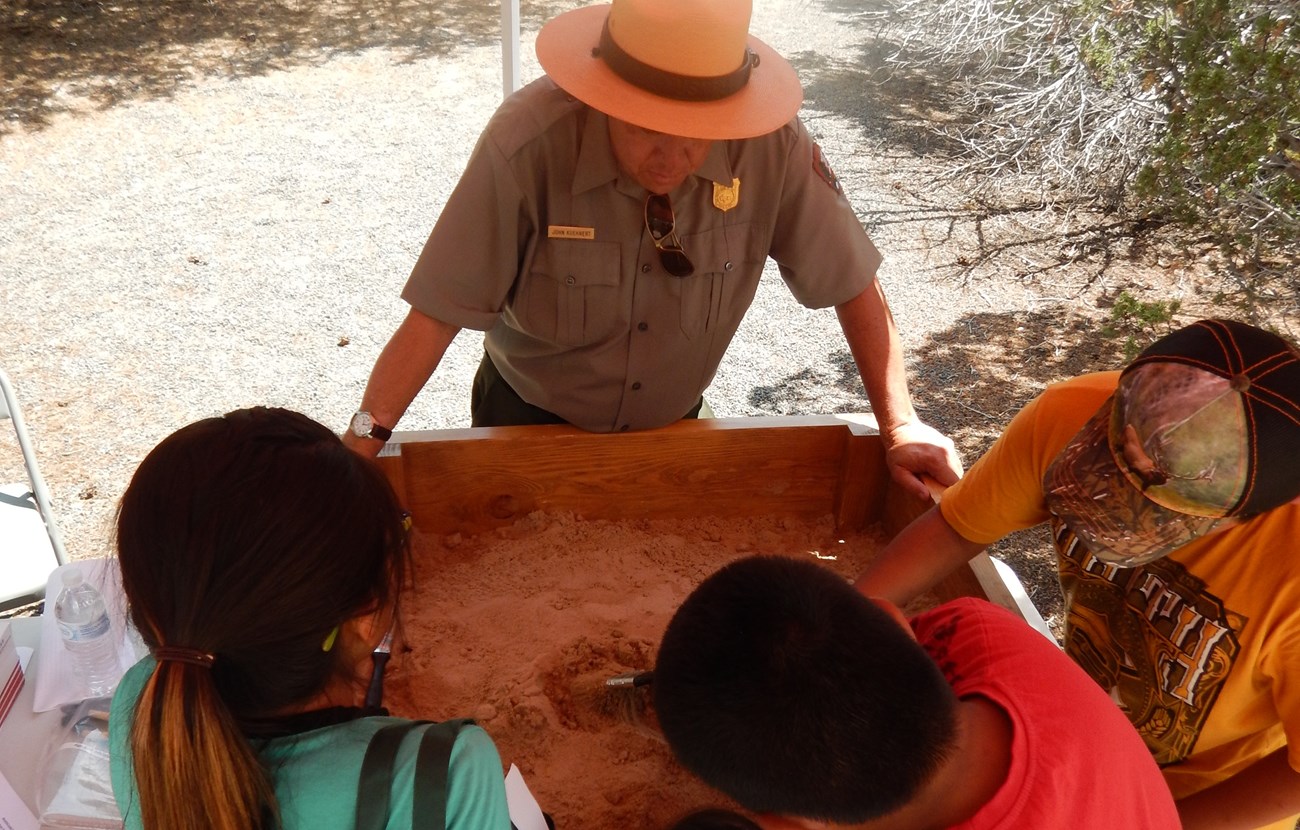Last updated: October 29, 2020
Article
National Park Getaway: El Morro National Monument
By Connie Thompson, Park Ranger, El Morro National Monument
In commemoration of National Hispanic Heritage Month, September 15 to October 15, and preparation for National Native American Heritage Month in November, take a virtual trip to El Morro National Monument or plan a future trip.

NPS Photo
At El Morro National Monument, a thousand years of history is written in stone.
Follow in the footsteps of ancient Puebloans, Spanish conquistadors, and American pioneers—all in one afternoon. Offering a rare opportunity to see an original historical record etched on the rock, the self-guided stroll along Inscription Loop takes you past some of the marks left by those who passed by the promontory the Spanish dubbed El Morro, or “the headland.”
Long before the conquistadors arrived, Puebloans built communities here. Atop the bluff, they had a strategic position; at its foot lay the only reliable source of water for 20 miles around.

NPS Photo
Climb 200 feet along the Headland Trail to the site of one of the two pueblos along the rim of the box canyon. From about 1275 to 1350 CE (common era), this pueblo flourished with over 300 rooms built around a central courtyard. Walk around the perimeter of the 18 rooms that have been excavated. Imagine what it was like in the pueblo’s heyday, when some 500 people lived and worked together here.
From the pueblo, enjoy a bird’s-eye view of the valley. As you descend, look closely for hand- and toe-holds the Puebloans carved into the rock to bring them down to the pool at its base. The Puebloans left images of mountain sheep, bear claws, and human-like figures on the Zuni sandstone. Their descendants call this sacred place A’ts’ina, or “place of carvings on the rock.”

NPS Photo
The Spanish, also lured by the pool, followed suit. In 1605, 15 years before English settlers aboard the Mayflower landed at Plymouth Rock, the first Spanish inscription marked conquistador Don Juan de Onate’s visit.
El Morro gained notoriety more than two centuries later, when army engineer James H. Simpson and artist Richard Kern provided detailed descriptions and drawings of its inscriptions. In the wake of Simpson and Kern’s visit, American emigrants to California, railroad survey expeditions, and even an army camel corps passed by El Morro, adding to the marks on what was then known as Inscription Rock. Listen carefully as you walk along Inscription Loop—you can almost hear the scrape of their knives against the sandstone.

NPS Photo
El Morro was designated a national monument in 1906 by President Theodore Roosevelt to preserve the hundreds of petroglyphs and pictographs and thousands of inscriptions left here across the centuries. It’s no wonder journalist Charles F. Lummis was inspired to write in the monument register, “No other cliff on earth records a title as much of romance, adventure, heroism.”
Learn about the cultural and natural history of El Morro on our website and social media pages as you plan your future visit. The monument is just 42 miles west of Grants, New Mexico, via Route 53. Directions and more information are available on our website.
From an afternoon stroll back in time to a night at our nine-site campground under the dark night skies, wonders await at El Morro National Monument.
